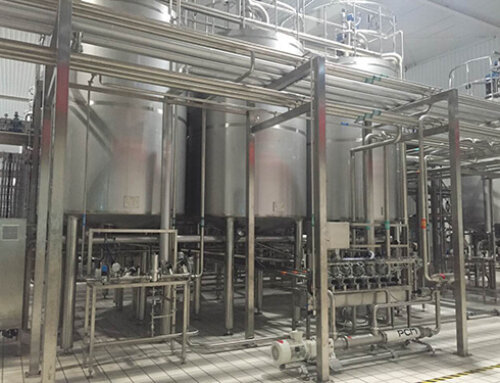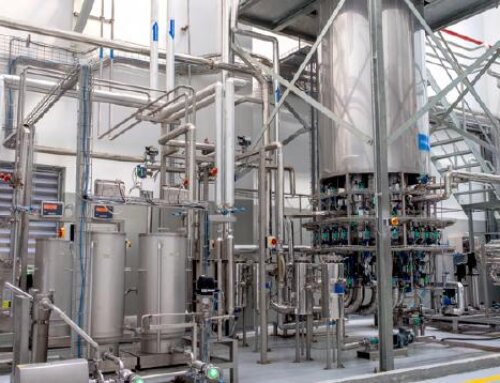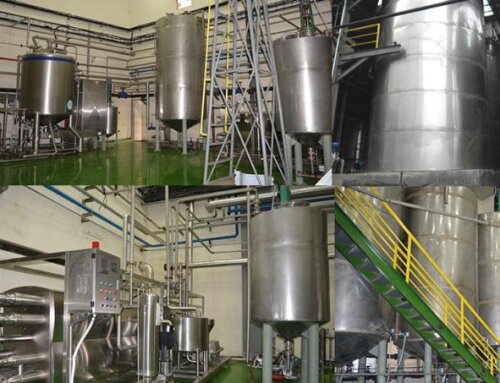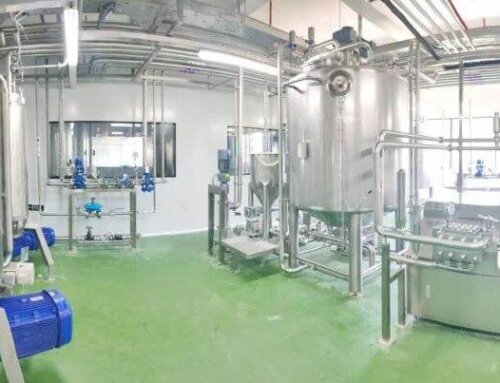In the process of fruit and vegetable juice processing, we usually need to remove the solids of the juice to produce clarified juice, such as clear apple juice, clear banana juice, etc. So what are the more widely used fruit and vegetable juice clarification technologies in fruit and vegetable juice processing plants? Today we will make a detailed introduction.
I. Clarifying Agent
The clarifying agent can physically or chemically react with the components in the fruit and vegetable juice, causing the turbid substances in the fruit and vegetable juice to form complexes, flocculation and precipitation. Commonly used clarifying agents include gelatin, tannin, chitosan and so on. In an acidic medium, the gelatin tape is positively charged, and the gelatin molecules and the negatively charged pectin, cellulose and other colloidal particles in the fruit and vegetable juice are electrically neutralized, destroying the stable colloidal system of the fruit and vegetable juice, attracting each other and condensing and depositing.
The clarifying agent can be dissolved in water to make a solvent, and then added to the clarification tank and fully mixed with the juice to achieve the purpose of clarifying the juice.
II. Enzymatic Hydrolysis
The enzymatic clarification method uses enzyme preparations to hydrolyze the starch, fiber, pectin and other substances in the fruit and vegetable juice, and at the same time causes other colloids in the fruit and vegetable juice to lose the protective effect of macromolecules and co-precipitate to achieve the purpose of clarification. This method is also the most widely used for producing clarified juice. Within 45-55°C, the enzymatic reaction of pectinase and amylase accelerates as the temperature rises, and when it exceeds 55°C, the enzyme is inactivated due to high temperature. The time required for the clarification of the enzyme preparation depends on the temperature, the type of fruit and vegetable juice, the type and concentration of the enzyme preparation. The low temperature requires a long time, and the high temperature requires a short time. However, if the temperature is too high, it will cause the juice to ferment, so the temperature is generally controlled at about 55°C. The enzymatic hydrolysis of fruit and vegetable juice is generally carried out in a fermentation tank. After the fruit and vegetable juice is crushed and pressed, it is heated by a heat exchanger and then feed into the enzymatic hydrolysis tank for clarification.

III. Heating or Freezing
The colloidal substances in fruit and vegetable juices are often agglomerated and precipitated due to heating. This method is to heat the fruit and vegetable juice to about 80°C in 80-90S, and then quickly cool it to room temperature. Due to the drastic change in temperature, the protein and other colloidal substances in the fruit and vegetable juice are denatured, coagulated and precipitated, and the fruit and vegetable juice becomes clear. Due to the short heating time, it has little effect on the flavor of the fruit and vegetable juice. In order to avoid harmful oxidation and minimize the loss of volatile aromatic substances, heating must be carried out under oxygen-free conditions. A closed tube heat exchanger or instant pasteurizer can be used for heating or cooling.
Freezing can change the nature of the colloids in fruit and vegetable juices, cause the colloids to undergo concentration or dehydration, destroy the stability of suspended solids and colloids, and cause turbid substances to flocculate and precipitate. A part of the colloidal solution is completely or partially destroyed and becomes an amorphous precipitate, which is removed by filtration after thawing.
IV. Ultrafiltration
Ultrafiltration is a filtration technology that uses the pressure difference between the two sides of the membrane as the driving force and uses membrane pores to separate the solution. It is suitable for the separation of solutions of large molecules and small molecules, and the general filtration range is between 0.002-0.2μm. Because the filter pores is tapered with a small top and a large bottom, as long as the material can enter the pores of the ultrafiltration membrane from above, it will pass through without clogging. In recent years, ultrafiltration has conducted extensive research on clarifying apple juice, pear juice, and grape juice. Among them, ultrafiltration has become a necessary processing procedure in the production of concentrated apple juice.

V. Centrifugal Separation Technology
Centrifugal force is used to separate the solid particles from the juice in the fruit and vegetable suspension, and remove the coarse suspended particles, pomace and part of the pulp and other small solid particles in the fruit and vegetable juice. The fruit and vegetable juice enters the centrifuge chamber of the rotating drum through the feeding tube. Under the action of high-speed centrifugal force, the pomace is thrown to the wall of the rotating drum, and the pomace is continuously sent to the conical end of the rotating drum by the screw conveyor to be discharged, and a clarified juice is obtained, it flows out from the front part of the drum through the screw gap. According to the light transmittance of the juice obtained in the production, the optimal speed and time of the centrifugal clarification method are determined. For fruits and vegetables with softer flesh such as strawberries and kiwi, centrifugal separation can be used as an auxiliary clarification process.





